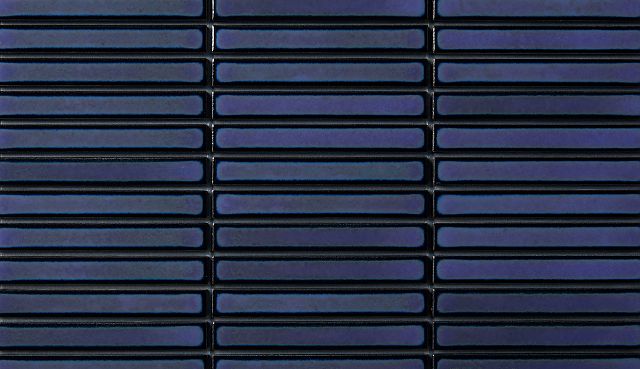Catch a glimpse of Captain Kelly’s Cottage nestled against a gentle green slope of Bruny island farmland and one recognises the easy familiarity of the galvanized iron pitched roof, the wide, low veranda, the cylindrical water tanks and the cluster of brick chimneys silhouetted against the sky.
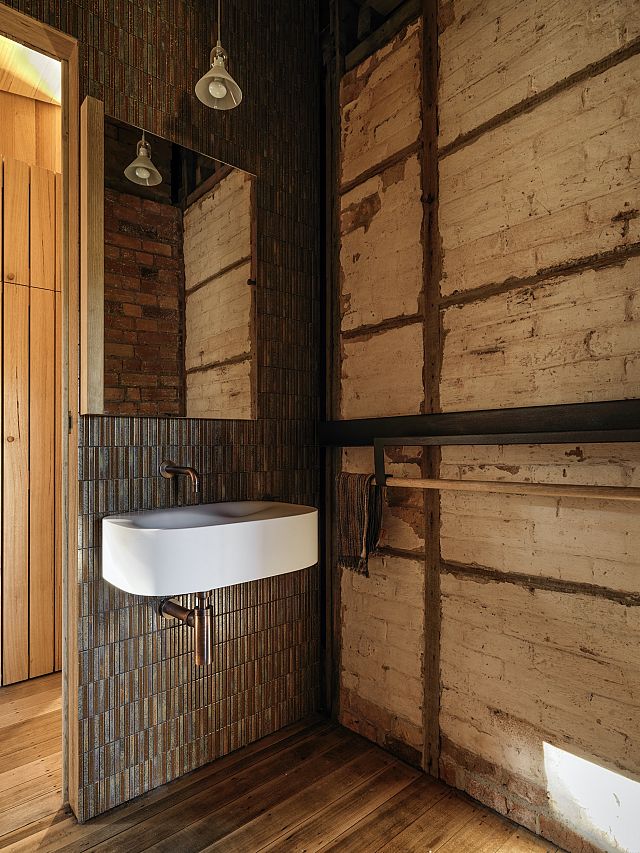
Products
- Yohen Border YB12
- Custom INAX tiles on coffee table
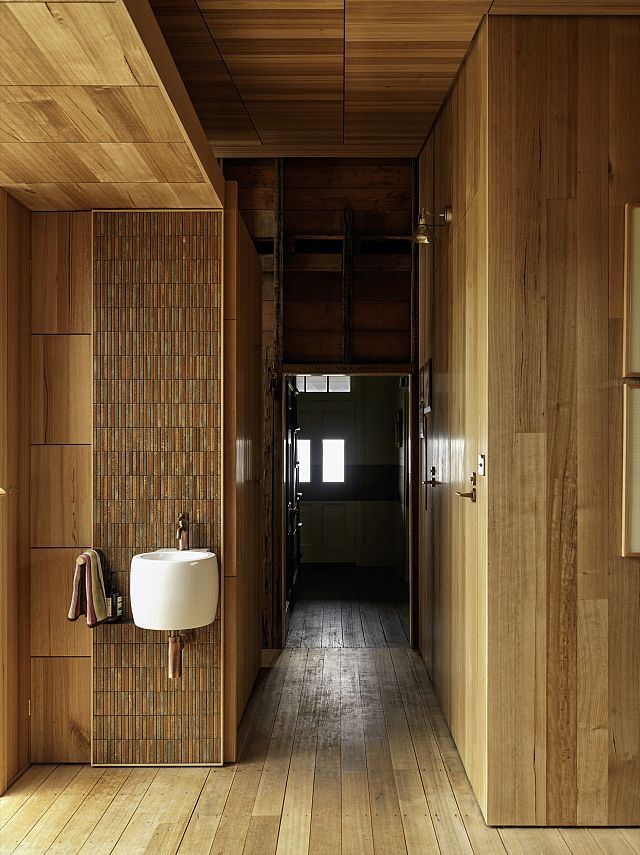
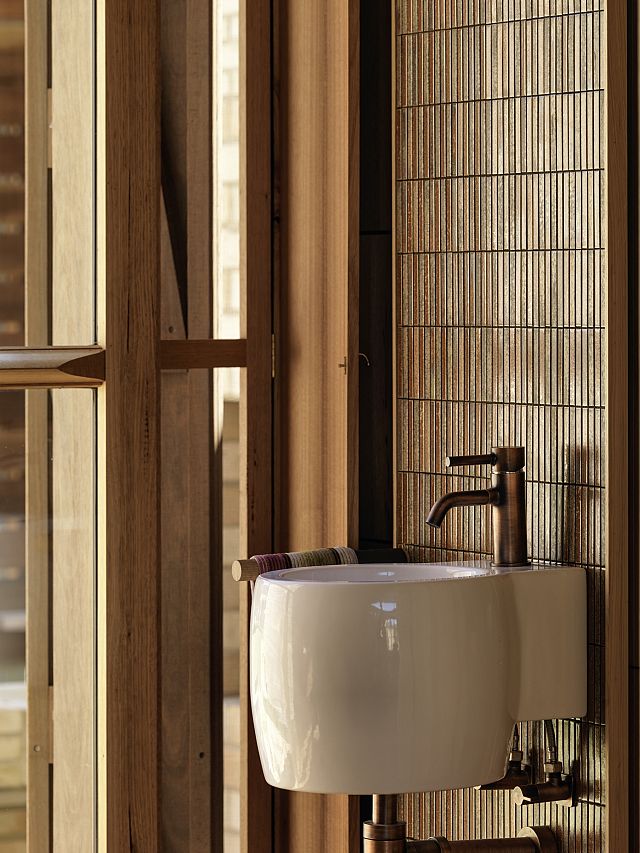
It is an identifiable rural early-Australian architectural vernacular, most often found in tumbledown condition here and there outside small farming towns. Look closer though, and this familiar scene becomes disrupted – a timber ‘exoskeleton’ on one side, an improbably raised roof plane on another, the expanse of geometric timber window shutters – while these cannot possibly be original, these disruptive elements nevertheless intuitively feel that they belong. Step inside, and the full extent the work by John Wardle Architects is there to be discovered, in a home that introduces the inhabitant to narratives large and small – of materials, of moments, of place and of history.
John Wardle, founding principle of John Wardle Architects, and his family have lived in the cottage on their Bruny Island farm since 2002, maintaining and improving the land over that time, and developing an affinity with the modesty of the dwelling while “pondering the changes that could be implemented”. Through living in the cottage and working on the land, the design “unfolded over time”, says John.
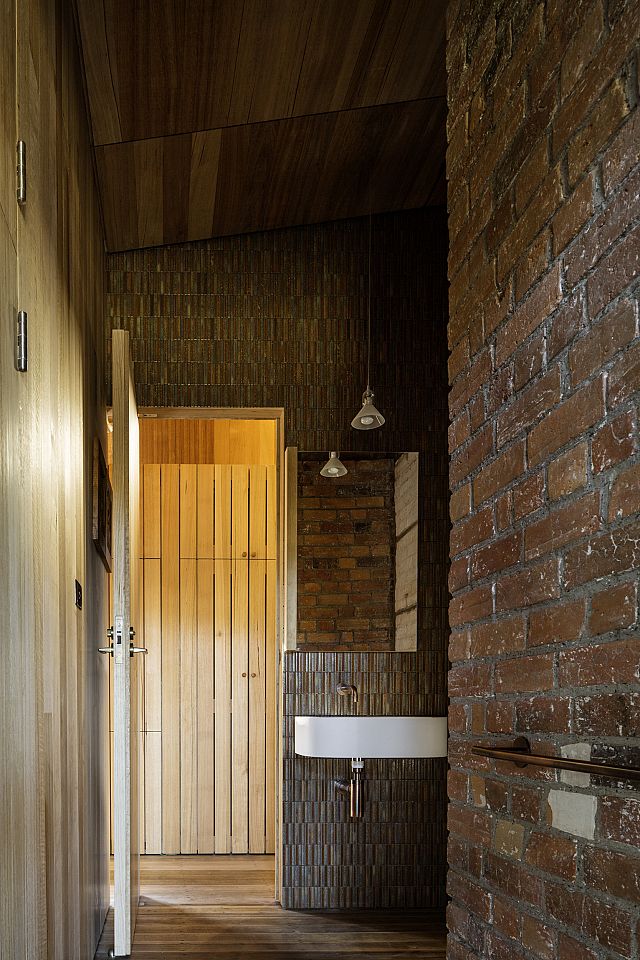

A large part of this unfolding design involved a process of discovery as they delved into the cottage’s history, learning that it had been built in the 1830s for Captain James Kelly, a mariner who, it is speculated, employed his whaling crew to construct the cottage during the off season. The labour of this crew became visible in the unconventional construction techniques uncovered as the architects and construction team painstakingly removed the intrusions of previous unsympathetic renovations and additions.
“We undertook extensive research into the historical and social context of this cottage, mainly for personal interest but it became inextricable from my great desire to maintain the integrity of the cottage and the techniques of the past”, says John. The project may be termed a restoration, which in many ways describes how the design continuously finds its way back to remain true to the original, yet it by no means seeks to return the cottage to its utterly original state. Rather, the evidence is left to remain of the process undertaken to ‘peel back’ these later layers of the building and expose the original, creating a chronology that culminates in the home’s present incarnation.
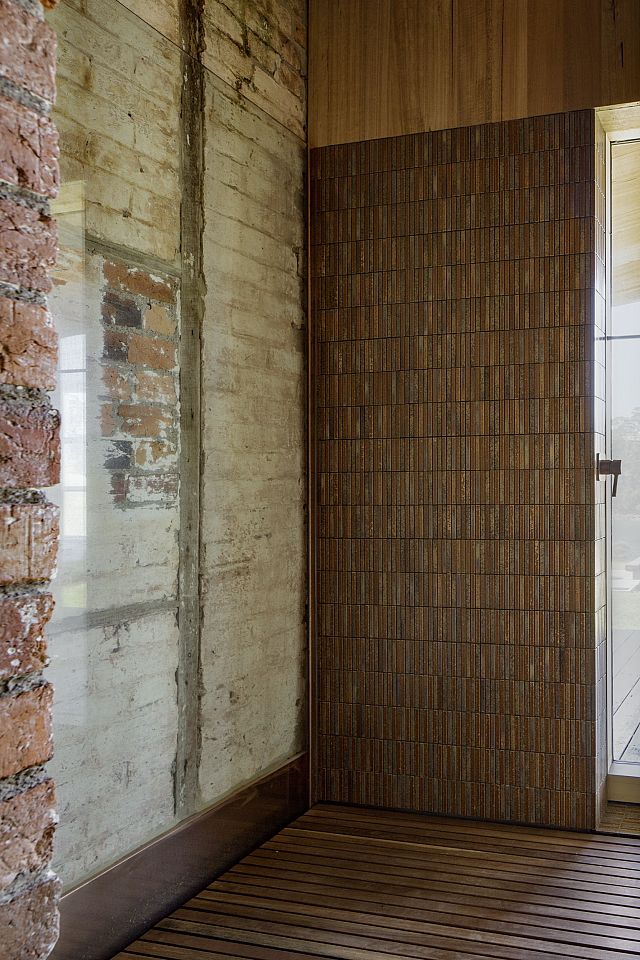
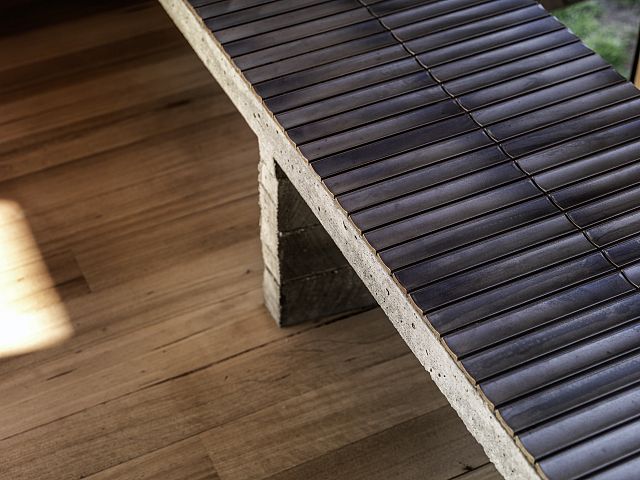
In this way, the structure of the cottage is imbued with the compounded narrative of its history. The materiality of the design is integral to recalling the old in the new through the deliberate use of a single purchase of Tasmanian oak for everything from the floor and the walls, structure and ceiling to the joinery. “We sought to showcase old techniques, reuse original timbers and highlight the work of the original fabricators”, says John. “In this project the significance of history and place are highlighted by these materials. The materials in the contemporary interventions are sympathetic with the old and continue a narrative of global imports in similar way to what the original builders would have encountered, as there were so few materials available at the time in the new colony.”
This sense of uniting the local with global imported products comes through in the few aspects of Captain Kelly’s Cottage not fashioned in timber. An earlier trip to Japan had seen John’s love of handmade traditional crafts leading him on the arduous journey to the small, inaccessible town of Tokoname. This town, where the streets are paved with broken clay sake bottles and few tourists ever venture, is the home of INAX tiles, founded by a father and son following the commission by Frank Lloyd Wright to produce the tiles for his Imperial Hotel in Tokyo. On his return, John discovered that Artedomus, whose products he has long specified in his work, are the Australian distributor of INAX Tiles.
These fortuitous circumstances enabled Artedomus to source the custom bronze scalloped INAX Sairin tiles that cover the hearth and coffee table and the Yohen Border YB12 mosaics for the bathroom walls in Captain Kelly’s Cottage, their handmade quality, texture and hues complementing the interior’s warmth and depth. “The handmade is always of interest to me and seeing the facility in Tokoname where these tiles were made was a wonderful experience”, recalls John. These imported tiles, which carry with them their own historical narrative, beautifully encapsulate the unique combination of local materials and global products found in early Australian colonial architecture, creating yet another contemporary link to the cottage’s past.
Apertures are positioned to frame views of the garden and the city beyond.
Two Agape basins were also sourced by Artedomus. Wall mounted, they convey a sense of simple functionality, suitable to the spirit of this modest cottage, and yet also a timeless elegance of organic form, which John found to be reminiscent of the weather-worn stones found on the nearby beach. “We have appreciated the range and depth of the Artedomus collections for many years and have specified their products on a range of our projects”, says John, adding wryly, “I personally have a great affection for clay and the many and varied finishes available. Artedomus know and understand this weakness and continue to feed it to us with their generous customer service.”
The small cottage, remarkably modest in scale, has received significant recognition worldwide, including most recently winning the Royal Institute of British Architects (RIBA) Awards for International Excellence 2018 and the House Interior of the Year at the Dezeen Awards. This huge acclaim for a dwelling in many ways so humble recalls an invented word John Wardle Architects use to describe their architecture: ‘scaleless’. It refers to their belief that “architecture must work at many scales – from the landscape to the hand, from the city to an individual window – and in so doing reveal something about us and our surroundings”.
Captain Kelly’s Cottage is a profound example of this belief at work, encompassing the architects’ desire that the project complement its wider coastal landscape “while sitting comfortably within itself, a tiny cottage atop a cliff”.‘Scaleless’ also perhaps describes the intent behind the design, which saw the architects drawing on ideas from the practice’s civic-scale projects “curating moments which encourage social connectivity, and other quieter moments of reflection and repose”. The original verandah, extended with the new intervention to fully encompass the cottage, creates a “journey of moments” – a seat, a fireplace, a courtyard, a reading nook.
“Scalelessness, in this way, refers to striving for a direct and intimate connection with the human condition regardless of the scale project”, says John, and it is perhaps here that the project’s extraordinary quality lies. Without regard for scale or pretention, Captain Kelly’s Cottage connects with the essential humanity whose thread has endured throughout the humble cottage’s long history.
ARCHITECT John Wardle Architects
PHOTOS Trevor Mein
WORDS Rose Onans
LOCATION Tasmania
This article originally featured on The Local Project.
